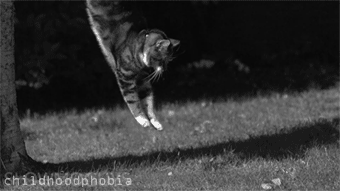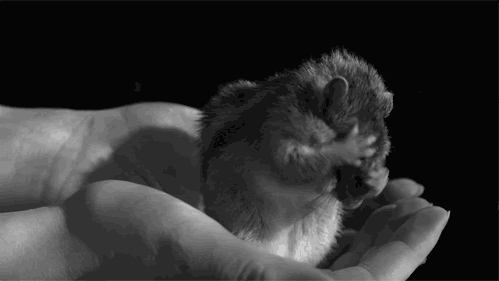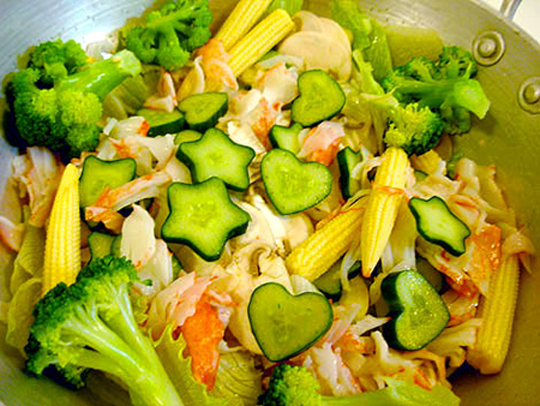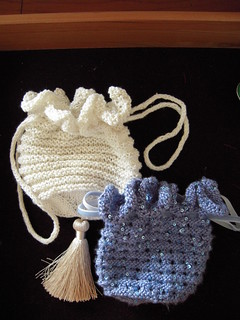If there’s ever a day to hold onto hats, double-test foundations and keep an ear out for rumblings deep within the Earth, it’s Richter Scale Day. This occasion is an acknowledgement and celebration of the birthday of the man who taught the world how to measure earthquakes – Charles F. Richter.
Born in 1900, the American earthquake obsessive (technically known as a ‘seismologist’), came up with the Richter Scale in 1935, while at the California Institute of Technology. Since then, the world has been able to compare various earthquakes and investigate their relative power for destruction. The 20th century’s biggest happened in Chile on 22 May 1960, measuring a magnitude of 9.5.

Word of the Day
chat·tel
History
I. M. Pei (1917)

Ieoh Ming Pei, better known as I. M. Pei, is a Pritzker Prize-winning Chinese-American architect whose buildings can be seen the world over. In his works, structure and environment are
carefully integrated with precise geometric design to create crisp, clear, sculptural edifices. He is known for his sensuous use of materials like marble, concrete, and especially glass—which he used in his pioneering all-glass curtain walls
Steve Martin

An Emmy-winning television comedy writer in the late 1960s, Martin began performing stand-up in the early 70s, achieving acclaim as a regular on Saturday Night Live in the late 70s. He recorded several
comedy albums, two of them Grammy winners, and starred in TV specials and numerous comedy films. Martin
has also found success as a writer of plays and novellas.
1514 - Copernicus made his first observations of Saturn.
1921 - Weather broadcasts were heard for the first time on radio in St. Louis, MO.
1937 - "LIFE" magazine was printed without the word "LIFE" on the cover.
1941 - An organ was played at a baseball stadium for the first time in Chicago, IL.
1986 - The world’s worst nuclear disaster to date occurred at Chernobyl, in Kiev. Thirty-one people died in the incident and thousands more were exposed to radioactive material.
Lucille Desiree Ball

(August 6, 1911 – April 26, 1989)
DAILY SQU-EEK


If You Were Born Today, April 26
You are a very fixed and determined person. These qualities help you to determinedly focus on a goal and patiently see it through to fruition. However, at times you can be one track minded and stubborn! Change and instability tend to bother you more than most. You can also be an exceptionally good worker with excellent work ethic and a strong sense of responsibility. Others know they can depend on you. Famous people born today: Carol Burnett, Charlotte Rae, Michael Damian, Channing Tatum, T-Boz, Jordana Brewster.

A Stretch of Luck
Photograph by Yanming Qin, National Geographic
Red lanterns create a decorative canopy during the Spring Festival, or Chinese New Year, a significant holiday during which millions of Chinese travel home to be with family. In China the color red traditionally symbolizes good fortune and is said to bring happiness and prosperity.

knit
Flappy Flounder pattern by cheezombie
Flappy Flounder doesn’t get his name from the slim profile and awkward locomotion; it’s because flounder are notorious as the gossips of the ocean. - che...
| |||||||
knit
A Bag for Jane pattern by Elizabeth Boyle
During the Regency period, sisters and friends knit small bags known as “Sovereign purses” to exchange as gifts. After seeing them in Candice Hern’s wonderf...
| |||||||
knit
Outside-In Hexagon pattern by Rebecca Bisbing
My ravelry friend, Margaret MacInnis, asked me to test knit a tutorial that she had worked up for knitting an outside-in pattern on 2 circulars. That was a n...
| |||||||
knit
Katrina Rib pattern by Cookie A
Note: The pattern was originally created as a fundraiser for Hurricane Katrina aid in 2005. None of the wording has been changed since then, and this patte...
| |||||||
knit, 3 - 6 yrs
Caperna pattern by Tatyana Zhigalkovich
Sizes available 3-4 years (98-104), 5-6 years (110-116)
| |||||||
crichet
crochet
Ravelry: Crochet Flower Hot Pad pattern by FreeCraft Unl...
Yardage 60 - 120 yards (55 - 110 m)
| |||||
crochet

crochet
Crochet | Star Stitch Tote With Jute Twine | Free Patter...
Crochet pattern for a jute twine tote with star stitch pattern. Picture tutorial and video link available to make the instruction easy to understand and follow.
| |||||

RECIPE
Classic pesto usually has cheese, garlic, and nuts, but this super-streamlined version proves that they’re not mandatory to make a delicious PESTO sauce

CROCKPOT RECIPE
stephanie o'dea
Apple Coffee Cake-- made in the Slow Cooker
I really like baking in the slow cooker. I get it that this perhaps sounds a bit odd---- why should I bake something in the crockpot for 2 to 3 hours, when I can easily throw a pan in the oven and have coffee cake in only 30 minutes?
I'll tell you why. I'm bonkers.
I don't mean this in the clinical sense (although I'm sure some could argue otherwise), I mean it in the I'm always doing too many things at once and sitting around waiting for 30 minutes for a cake to rise and bake properly just isn't going to happen.
because the doorbell rings.
or the phone.
because the baby needs changing.
or because she plays with a bottle of vanilla extract while "sorting" the spice cabinet and some spills and she licks it up and then her mom reads the bottle and finds out it's 26% pure alcohol and maybe-just-maybe over-reacts and calls poison control and talks to a really nice man named Michael who assures her that she's JUST FINE and that NO ONE likes the way that vanilla extract tastes and she surely couldn't have ingested very much.
or something like that.
SO! That is why I like baking in my slow cooker. I like the wiggle room. I like it that I can whip up the batter, wash the dishes, and leave the house to run a few errands or pull some weeds in the garden. I like that I know that when I start to smell the baked goods, there's no need to panic---it's not going to burn to a charred brick. I like that I can hold a baby on one hip while I check the baking process without worrying that she's going to lean in and burn her hand to a singed nub.
The Ingredients.
serves 8
coffee cake:
cooking spray
2 cups Bisquick mix
2/3 cup applesauce
1/4 cup milk
2 tablespoons sugar
2 tablespoons butter, melted
2 apples, peeled, cored, diced (green is best, I had Fuji on hand)
1 tsp ground cinnamon
1 tsp vanilla extract
1 egg
crumb topping:
1/4 Bisquick (or Pamela's, etc. see above notes)
1/4 cup brown sugar
2 tablespoons butter, softened
1/4 cup chopped nuts (optional)
The Directions.
I used a 4-quart slow cooker with the batter directly in the crock (stoneware) insert. If you only have a large 6-quart slow cooker, that's okay---put the dough into a loaf pan and put that into the stoneware insert. No need to add water, just put the pan in the crock.
Spray your pan or 4-quart insert with cooking spray and set aside. In a mixing bowl, combine all the ingredients for your coffee cake. Stir with a rubber spatula--no need to break out the mixer. The batter will be thick and lumpy. Pour into your prepared stoneware insert (or baking pan).
In a small bowl, combine the ingredients for the crumb topping and sprinkle evenly on top of the batter. Cover and cook on high for 2 to 3 hours, or until the cake browns and pulls away from the sides. Uncover the cooker and cook on high for another 30 minutes, or until an inserted toothpick comes out clean.
The Verdict.
This is a perfect coffee cake: sweet, but not too sweet, moist and crumbly. I sometimes will make the batter the night before and then scrape it into the crock to bake while I get work done around the house before the rest of the house wakes up. I also love making this during the day as an after school snack. It freezes and reheats (in the microwave) beautifully--perfect for a busy morning.

PUZZLE

CRAFT
Button Initial


Austric Boy Draws Accurate World Map from MEMORY
By Sumitra
An 11-year-old autistic boy is cooking up an internet storm with his unbelievable ability to draw a map of the world freehand, from memory!
The boy’s mom is a college professor, and he happened to sit in on one of her classes a few weeks ago. During the class, he apparently walked up to the whiteboard and reproduced the entire map of the world, complete with the names of the countries. The students in the classroom were so amazed that they immediately took pictures with their phones, which eventually got posted on news sharing site Reddit.

CHILDREN'S CORNER ... coloring



'where's the bathroom?' in Vietnamese - Cầu tiêu ở đâu?


CLEVER


EYE OPENER
The Winners of the 50th Annual Wildlife Photographer of the Year
twisted sifter
The top awards for the 50th Wildlife Photographer of the Year competition were announced at London’s Natural History Museum. The winners received their awards from the Museum Patron, The Duchess of Cambridge, Sir David Attenborough, wildlife presenter Liz Bonnin and renowned wildlife photographer Frans Lanting.
American photographer Michael ‘Nick’ Nichols was named Wildlife Photographer of the Year 2014 by a panel of international judges for his serene black-and-white image of lions resting with their cubs in Tanzania’s Serengeti National Park. Eight-year-old Carlos Perez Naval was awarded Young Wildlife Photographer of the Year 2014 for his image of a scorpion soaking up the Sun near his hometown in Spain.
Nichols’ photograph beat more than 42,000 entries from 96 countries to the grand title award. Following the pride for nearly six months meant they were used to his presence as he photographed them in infra-red, which he explains, ‘transforms the light and turns the moment into something primal, biblical almost’. Nichols set out to create an archetypal image that would express both the essence of lions and how we visualise them, a picture of a time past, before lions were under such threat.
The last great picture – Michael ‘Nick’ Nichols (USA)
Overall Winner – Wildlife Photographer of the Year

Nick set out to create an archetypal image that would express both the essence of lions and how we visualize them – a picture of a time past, before lions were under such threat. Here, the five females of the Vumbi pride – a ‘formidable and spectacularly cooperative team’ – lie at rest with their cubs on a kopje (a rocky outcrop), in Tanzania’s Serengeti National Park. Shortly before he took the shot, they had attacked and driven off one of the two pride males. Now they were lying close together, calmly sleeping. They were used to Nick’s presence – he’d been following them for nearly six months – which meant he could position his vehicle close to the kopje. Making use of a specially made hole in the roof, he slowly stood up to frame the vista, with the Serengeti plains beyond and the dramatic late-afternoon sky above. He photographed them in infrared, which he says, ‘cuts through the dust and haze, transforms the light and turns the moment into something primal, biblical almost’. The chosen picture – and Nick believes that the creation of a picture is as much in the choice as the taking – speaks about lions in Africa, part flashback, part fantasy. Nick got to know and love the Vumbi pride. A few months later, he heard that it had ventured into land beyond the park and that three females had been killed.
Apocalypse – Francisco Negroni (Chile)
Winner – Earth’s Environments

Straight after the Puyehue-Cordón Caulle volcanic complex began erupting, Francisco traveled to Puyehue National Park in southern Chile, anticipating a spectacular light show. But what he witnessed was more like an apocalypse. From his viewpoint – a hill quite a distance to the west of the volcano – he watched, awestruck, as flashes of lightning lacerated the sky and the glow from the molten lava lit up the smoke billowing upwards and illuminated the landscape. ‘It was the most incredible thing I have seen in my life.’ Volcanic lightning (also known as a ‘dirty thunderstorm’) is a rare, short‑lived phenomenon probably caused by the static electrical charges resulting from the crashing together of fragments of red‑hot rock, ash and vapor high in the volcanic plume. The Cordón Caulle eruption spewed 100 million tonnes of ash high into the atmosphere, causing widespread disruption to air travel in the southern hemisphere. Volcanic activity continued at a lesser level for a year, spreading a layer of ash over the region.
The price they pay – Bruno D’Amicis (Italy)
Winner – The World in Our Hands

A teenager from a village in southern Tunisia offers to sell a three-month-old fennec fox, one of a litter of pups he dug out of their den in the Sahara Desert. Catching or killing wild fennec foxes is illegal in Tunisia but widespread, which Bruno discovered as part of a long-term project to investigate the issues facing endangered species in the Sahara. He gained the confidence of villagers in Tunisia, Algeria and Morocco and discovered widespread wildlife exploitation, including hunting and capture for commercial trade and traditional medicine. He also discovered that the causes and therefore the solutions are complex and include high unemployment, poor education, lack of enforcement of conservation laws, ignorant tourists and tour companies, habitat destruction and the socio-political legacy of the ‘Arab Spring’ revolts. But Bruno is convinced that change is possible – that tourism has a part to play and that thought‑provoking images can help raise awareness among tourists as well as highlight what’s happening to the fragile Sahara Desert environment.
Stinger in the sun – Carlos Perez Naval (Spain)
Overall Young Wildlife Photographer of the Year

Aware of Carlos’s presence, the common yellow scorpion is flourishing its sting as a warning. Carlos had found it basking on a flat stone in a rocky area near his home in Torralba de los Sisones, northeast Spain – also a place that he goes to look for reptiles. The late afternoon sun was casting such a lovely glow over the scene that Carlos decided to experiment with a double exposure (his first ever) so he could include the sun. He started with the background, using a fast speed so as not to overexpose the sun, and then shot the scorpion, using a low flash. But he had to change lenses (he used his zoom for the sun), which is when the scorpion noticed the movement and raised its tail. Carlos then had to wait for it to settle before taking his close-up, with the last rays of the sun lighting up its body.
The long embrace – Anton Lilja (Sweden)
Winner – 15-17 Years

The moment her eggs make contact with water, the jelly around them will begin to swell. So a female frog needs to have a male nearby, ready to fertilize the eggs the instant they leave her body. And a male needs to hold on to her to make sure he’s the one doing the fertilizing. So he grasps her in a tight embrace, known as amplexus, often for days, until she has laid her eggs. Hearing that masses of common frogs were gathering in a flooded gravel pit near his home in Västerbotten, Sweden, Anton set out to photograph the mating spectacle. Lying down on the bank at eye level with the water, he became fascinated by the light bouncing off the spawn and the water, which by now was vibrating with the activity of the frogs. Experimenting with his flash, he achieved the effect he wanted just as a pair of frogs in amplexus popped up right in front of the camera, the male revealing his throat to be flushed with blue. They stayed posed amid the glossy wobbliness, allowing Anton time to compose his shot.
Touché – Jan van der Greef (The Netherlands)
Finalist – Birds

A focus of Jan’s trip to Ecuador was the astonishing sword-billed hummingbird – the only bird with a bill longer than its body (excluding its tail). Its 11-centimetre (4.3-inch) bill is designed to reach nectar at the base of equally long tube-shaped flowers, but Jan discovered that it can have another use. One particular bird had a regular circuit through the forest, mapped out by its favorite red angel trumpet flowers and bird-feeders near Jan’s lodge. To get to the bird-feeders, it had to cross the territory of a fiercely territorial collared inca. Rather than being scared off, once or twice a day ‘it used its bill to make a statement’. To capture one of these stand-offs, Jan set up multiple flashes to freeze the hummingbirds’ wing-beats – more than 60 a second – and finally captured the precise colorful moment.
Little squid – Fabien Michenet (France)
Finalist – Underwater Species

Planktonic animals are usually photographed under controlled situations, after they've been caught, but Fabien is fascinated by the beauty of their living forms and aims to photograph their natural behavior in the wild. Night-diving in deep water off the coast of Tahiti, in complete silence apart from the occasional sound of dolphins, and surrounded by a mass of tiny planktonic animals, he became fascinated by this juvenile sharpear enope squid. Just 3 centimetres (an inch) long, it was floating motionless about 20 metres (66 feet) below the surface, probably hunting even smaller creatures that had migrated up to feed under cover of darkness. Its transparent body was covered with polka dots of pigment-filled cells, and below its eyes were bioluminescent organs. Knowing it would be sensitive to light and movement, Fabien gradually maneuvered in front of it, trying to hang as motionless as his subject. Using as little light as possible to get the autofocus working, he finally triggered the strobes and took the squid’s portrait before it disappeared into the deep.
8. The longline lottery – Rodrigo Friscione Wyssmann (Mexico)
Finalist – The World in Our Hands

It had clearly been a monumental struggle: the young great white shark’s jaw jutted out at an ugly angle, evidence of how it had fought to escape from the hook before finally suffocating. Rodrigo came upon the grim sight off Magdalena Bay on the Pacific coast of Baja California, Mexico, after noticing that a fisherman’s buoy had been dragged below the surface by a considerable weight. The hook was on a long line of hooks, set to catch blue and mako sharks. ‘I was deeply shocked. Great whites are amazing, graceful and highly intelligent creatures. It was such a sad scene that I changed the image to black and white, which felt more dignified.’ Such surface‑baited longlines may stretch for miles and are responsible for the deaths of tens of thousands of animals every year, many of them endangered.
9. Marc Montes (Spain)
Finalist – 11-14 years

Marc was trekking through the forest in the Val d’Aran, near his home in northern Spain – as usual, carrying his camera and keeping a lookout for animals – when he was thrilled to come across a large grass snake. ‘I have a great passion for reptiles, especially snakes,’ he says, ‘and it is rare to see this kind where I live.’ The grass snake, just over a meter (3 feet) long, was very alert and started moving, and the light was very poor. So Marc had to use a wide aperture, giving him only a very narrow depth of field (the depth that would be in focus). But though he had only a moment to compose the picture, he had the skill to take a portrait with the focus on the key part of the snake – its eyes.
Snowbird – Edwin Sahlin (Sweden)
Finalist – 15-17 Years

Cheese and sausage are what Siberian jays like – so Edwin discovered on a skiing holiday with his family in northern Sweden. Whenever they stopped for lunch, he would photograph the birds that gathered in hope of scraps. On this occasion, while his family ate their sandwiches, Edwin dug a pit in the snow deep enough to climb into. He scattered tidbits of food around the edge and then waited. To his delight, the jays flew right over him, allowing him to photograph them from below and capture the full rusty colors of their undersides more clearly than he had dared hope.

















No comments:
Post a Comment